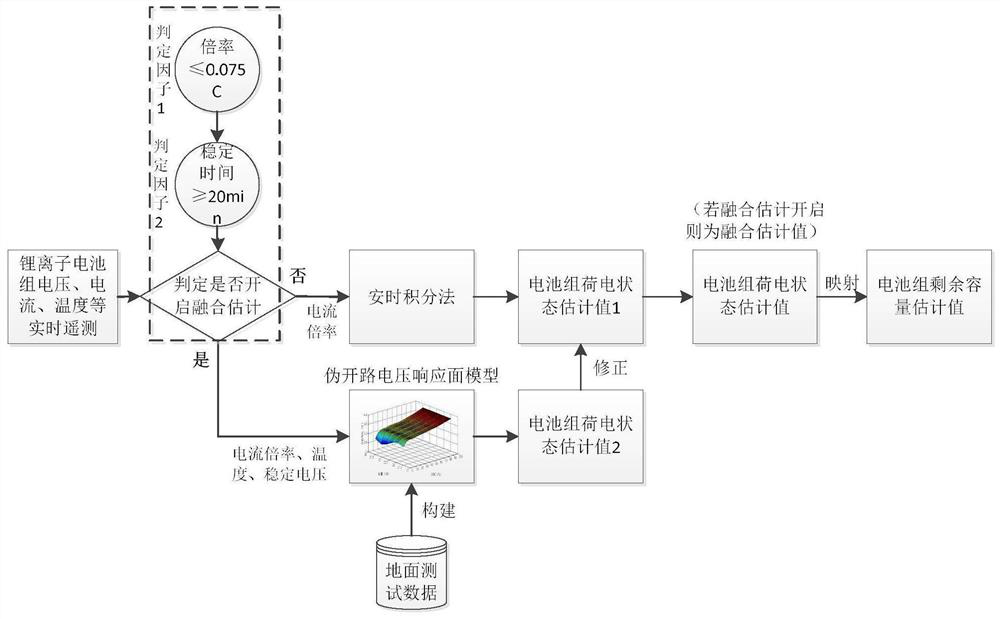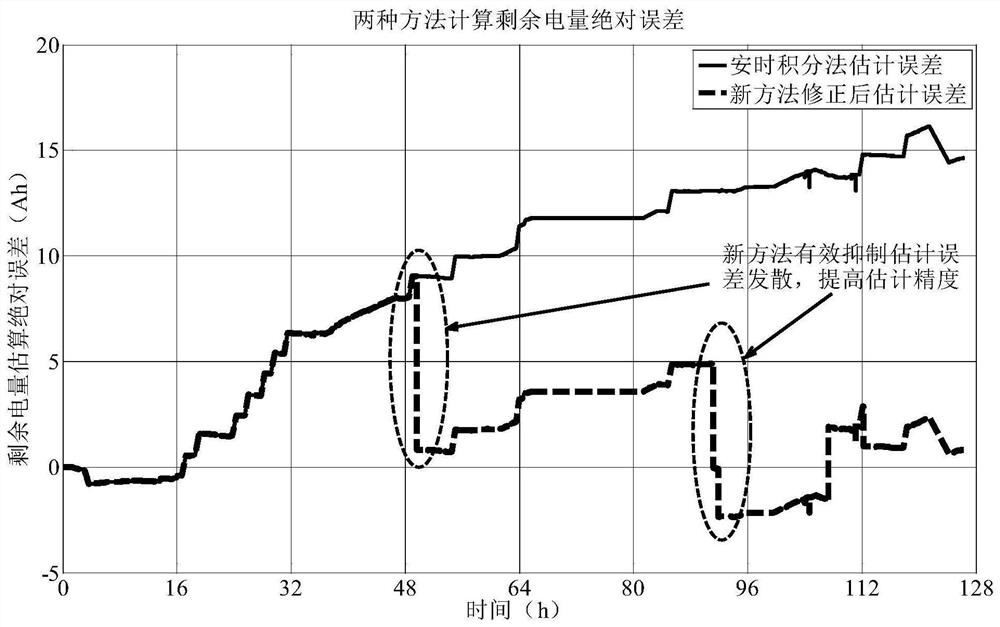Lithium ion battery pack residual capacity estimation method for deep space exploration
A technology of lithium-ion battery pack and remaining capacity, applied in the direction of measuring electrical variables, measuring electricity, measuring devices, etc., can solve the problems of inaccurate estimation results and current accumulation errors that cannot be corrected.
- Summary
- Abstract
- Description
- Claims
- Application Information
AI Technical Summary
Problems solved by technology
Method used
Image
Examples
Embodiment Construction
[0035] The technical solutions of the present invention will be clearly and completely described below in conjunction with the accompanying drawings. Apparently, the described embodiments are some of the embodiments of the present invention, but not all of them. Based on the embodiments of the present invention, all other embodiments obtained by persons of ordinary skill in the art without making creative efforts belong to the protection scope of the present invention.
[0036] A method for estimating the remaining capacity of a lithium-ion battery pack for deep space exploration provided by the present invention, such as figure 1 As shown, it specifically includes the following steps:
[0037] Step 1. Conduct constant current charge and discharge ground tests with a current less than a predetermined rate, establish a pseudo-open-circuit voltage response surface model of the battery pack, and form a data table reflecting the relationship between different battery pack temperat...
PUM
 Login to View More
Login to View More Abstract
Description
Claims
Application Information
 Login to View More
Login to View More - R&D
- Intellectual Property
- Life Sciences
- Materials
- Tech Scout
- Unparalleled Data Quality
- Higher Quality Content
- 60% Fewer Hallucinations
Browse by: Latest US Patents, China's latest patents, Technical Efficacy Thesaurus, Application Domain, Technology Topic, Popular Technical Reports.
© 2025 PatSnap. All rights reserved.Legal|Privacy policy|Modern Slavery Act Transparency Statement|Sitemap|About US| Contact US: help@patsnap.com



